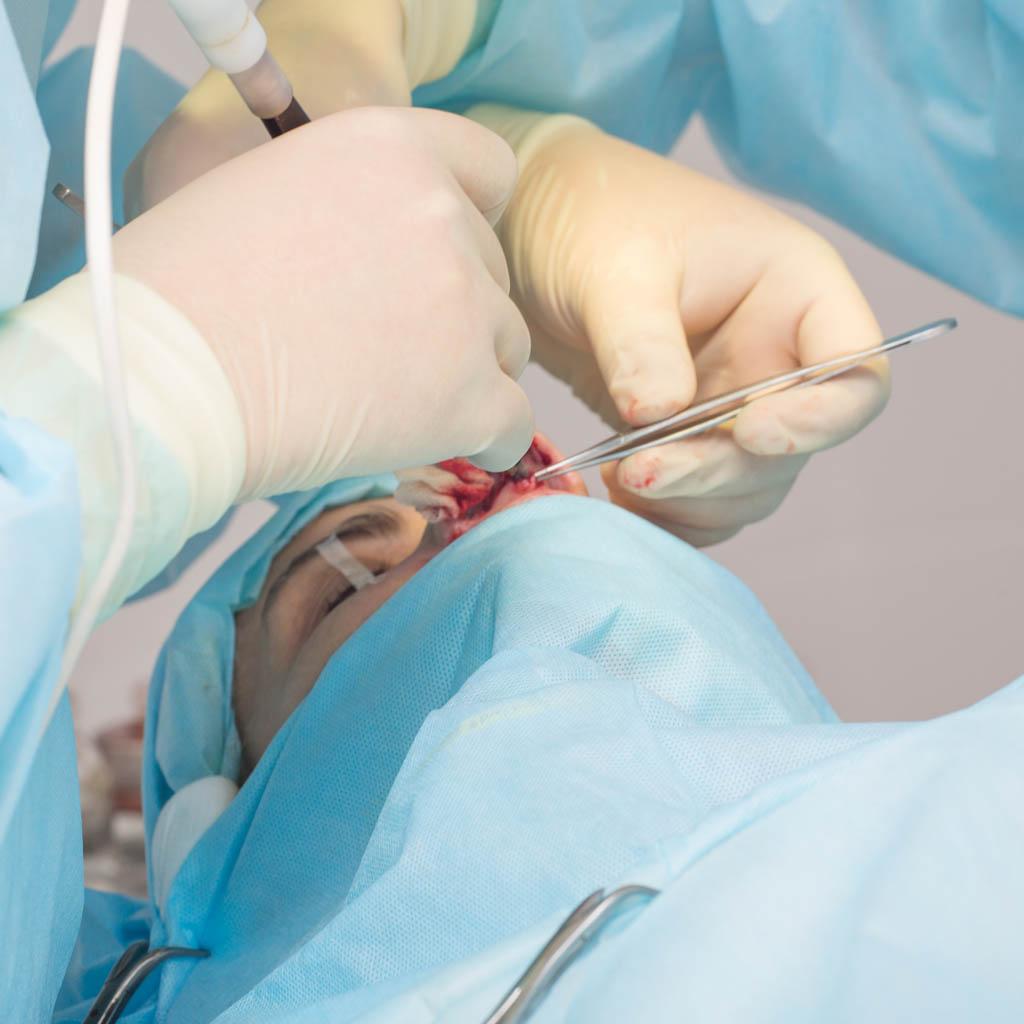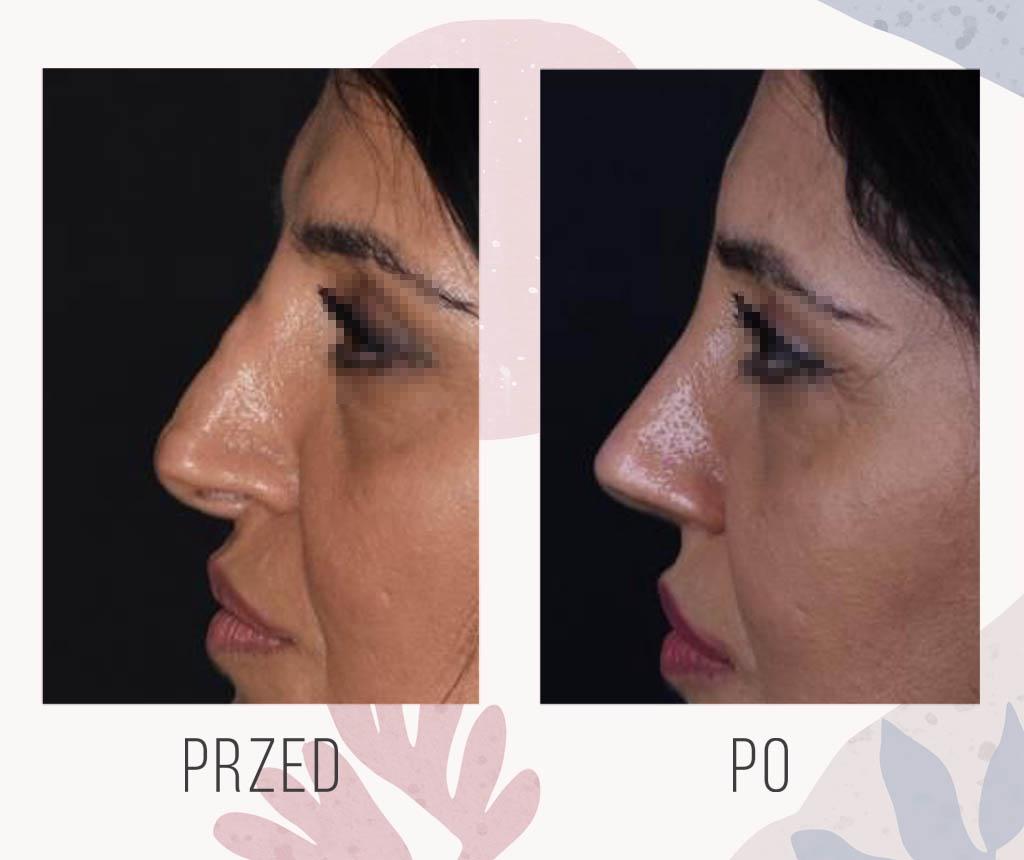TL;DR:
- Rhinoplasty can enhance both breathing and aesthetics, boosting confidence.
- Risks include bleeding, infection, breathing issues, numbness, pain, scarring, and potential need for additional surgery.
- Consultation involves health checks, expectations discussion, and photos for planning.
- Preparation includes avoiding smoking, certain meds, and understanding recovery timelines.
- Costs start at 14000pln, vary by complexity, surgeon’s skill, and location; some insurances may cover functional corrections.
- Post-surgery, expect swelling and pain, managed with medication and care guidelines; normal activity resumes in 2-4 weeks.
- Select a board-certified surgeon with significant rhinoplasty experience; inquire about their past results.
- Digital imaging offers a preview of potential outcomes; before-and-after photos provide real examples.
- Rhinoplasty is suitable for teenagers (post-growth) and all ethnicities; anesthesia options depend on surgery complexity.
- The Mayo Clinic is a recommended provider, known for quality care in rhinoplasty.
Wondering if getting a new nose is safe? You’re not alone. Nose jobs, or rhinoplasty, can do more than make you look good. They might help you breathe better too. But let’s get real—surgery can be scary. Knowing the good and the bad helps you choose smart. Keep reading to get the lowdown on nose surgery’s risks and perks.
What Are the Benefits and Risks of Rhinoplasty?
Can Rhinoplasty Improve Breathing and Aesthetics?
Yes, rhinoplasty can improve both breathing and looks. Rhinoplasty is more than just a nose job. It’s a way to fix a nose that’s hard to breathe through. It can also make a nose fit better with other face features. Most times, people get a new sense of confidence after this surgery.
But it’s not all easy. Working with a skilled doctor is key. They will talk with you about the nose shape you want. They will also make sure the new shape goes well with your breathing needs. You can find more about the benefits of this surgery here.
What Possible Complications Should You Be Aware Of?
All surgeries have risks, even rhinoplasty. Some risks are bleeding, infection, or breathing trouble. You might feel numb or have pain. Some people see scars or need more surgery.
It’s important to talk with your doctor before. They will check your health and take pictures. This helps plan the surgery. You’ll learn what to avoid before surgery. That includes some meds, smoking, and vaping. These things can slow down healing.
You’ll get either local or general anesthesia. The choice depends on what you need and what your doctor thinks is best. After, you must rest and take care not to hurt your nose. You’ll need about a week off work. Full activities can start again after 2 to 4 weeks. Sometimes, swelling lasts for months.
Sometimes, a second surgery is needed. That’s if the first one didn’t get things just right. But don’t worry too much. Most times, people are happy with their new nose. It’s important to pick a doctor who knows a lot about noses. You want someone you feel good talking to.
Remember, Mayo Clinic is known for great care in this area. They can help you with all your rhinoplasty needs.

How Should You Prepare for Rhinoplasty?
What Pre-operative Measures Are Recommended?
Before getting nasal surgery, you must meet with a surgeon. They will talk about your medical history and examine you. They take pictures of your nose from different angles. These help them plan your surgery. You must talk about what you expect from the surgery with your surgeon. This will help make sure you and your surgeon agree on the goals.
You should avoid smoking, vaping, and certain meds before surgery. These can harm the way you heal. Your doctor will tell you which meds to avoid and for how long. Following the doctor’s advice is key for a safe recovery.
What Can You Expect During a Rhinoplasty Consultation?
During a rhinoplasty consultation, your surgeon will ask what you want to change about your nose. They will tell you what can happen in surgery. This is when you learn about the surgery risks like bleeding, infection, and unevenness. You will also talk about anesthesia. This can be local with sedation or general. It depends on how complex your surgery is.
The talk will also cover what happens after surgery. You’ll learn how to care for your nose, manage pain, and when you can get back to normal life. Your surgeon will speak about costs and if your insurance may cover it.
Choosing a skilled surgeon is important. Look for someone with the right credentials and lots of experience. Feeling comfortable with your surgeon also matters a lot. It will help you trust them with your care.
What Is the Cost of Rhinoplasty?
Does Rhinoplasty Fit Your Budget?
When you think about getting a nose job, cost is a big deal. You might ask, “How much does it cost?” The price starts at 14000pln for a complete nose correction. Remember, this can change based on what you need done. Some folks get a nose job to look better or to fix breathing problems. Each case is different, so prices can vary.
Your nose job may cost more if your case is complex. The skill of your surgeon also plays a role. Where you live can make a difference in the price too. Talk to your surgeon about the cost. They can help you understand what you’ll pay for your unique nose job.
How Do Insurance and Financing Options Impact the Cost?
Now, let’s talk about money options. Some insurance plans might cover your nose job. This is usually true if you’re getting it for health reasons, like fixing breathing problems. But if you’re doing it just to change how you look, you’ll likely have to pay on your own.
Before you decide, check with your insurance. They can tell you if they’ll pay and how much. If insurance won’t cover it, you might look at payment plans. Many clinics offer ways to pay over time. This can make it easier to afford your nose job.
Risks are a part of any surgery, and nose jobs have their own. You could have bleeding, infection, or trouble breathing after the surgery. Numbness, pain, and scars are possible too. Some people might need another surgery to get the look they want. But don’t worry too much. Most of the time, things go well, especially if you choose a good surgeon.
When you plan for a nose job, you’ll talk a lot with your surgeon. They will check you out and help you get ready. You’ll talk about what you want and take photos to plan the surgery. Make sure to follow their advice on what to do before surgery to heal well. After surgery, you’ll need to rest and be careful while you heal.
Check out the price list for more details on the cost of rhinoplasty. It’s good to know what you’ll pay before you decide. And always ask lots of questions. The more you know, the better you’ll feel about getting a nose job.

What Does the Recovery Process Entail Post-rhinoplasty?
How to Manage Post-surgical Swelling and Pain?
After a nose job, you can expect some swelling and pain. But don’t worry, there are ways to handle it. Cold compresses are great for reducing swelling, but avoid putting ice directly on your nose. You’ll also get pain medicine to help with any discomfort. It’s key to keep your head up higher than your chest to keep swelling down.
What Are the Timeline and Tips for a Smooth Recovery?
For a smooth recovery, you need to take it easy for a while. You should plan to rest with your head up for at least the first week. It helps to lessen swelling and lowers the chance of bleeding. During this time, it’s best to avoid tough activities or anything that could hit your new nose. Most people go back to work or school after a week, but full healing can take a few months. It’s important to follow your doctor’s orders and keep all follow-up visits. Your surgeon will check your healing and can answer any questions you have. Remember, patience is key! Your nose is getting better each day.
How to Choose the Right Surgeon for Your Rhinoplasty?
What Credentials and Experience Should You Look For?
When picking a nose surgeon, look for board certification. This shows they met high standards in training and skills. They should have lots of experience, especially in rhinoplasty. Ask how many nose jobs they’ve done. See if they do this surgery often. You want someone who does lots of these, not just a few each year.
What Questions Should You Ask During Your Surgeon Selection Process?
During your rhinoplasty consultation, ask many questions. Find out about their past work. Ask to see before and after photos. Check if they offer revision rhinoplasty. This is a do-over surgery if you’re not happy the first time. Ask what to expect, how they handle problems, and about recovery. Make sure you feel they listen to you and explain things well.
Always ask about costs upfront. The price can be high, and you need to know if you can afford it. Insurance might pay for some of it. This is if you have breathing issues, not just for looks. Talk to your insurance to see what they cover. Keep in mind, cheaper isn’t always better. You’re changing your face, so go for quality.
Risks are there with any surgery. There can be bleeding, infection, or you might not love the look. Healing can be slow, and you might need more surgery. These are rare but possible. A good surgeon will talk about these risks with you. They’ll make sure you understand before you decide.
Before surgery, you’ll stop some meds and can’t smoke. This helps you heal better. The surgery uses drugs to make you sleep or not feel pain. After, you need to rest a lot. You might have some pain, but it shouldn’t be too bad. Your nose will be swollen, and you must take it easy. Most people need a week off work.
Finding the right surgeon takes time. Look for someone skilled, with the right papers, who makes you feel safe. They should have done many nose jobs and know how to get you through smoothly. This choice is key to a safe and happy nose change.

How Can You Visualize Rhinoplasty Results Before Surgery?
Are Digital Imaging and Simulations Reliable?
Yes, digital imaging and simulations can give you a good idea of how your nose may look after surgery. They use special computer tools to change your nose’s picture. This helps you and your doctor talk about what you want. It’s like a test drive for your new nose shape.
Before you get a nose job, you might wonder how you’ll look after. Good news! Doctors have tech tools that can show you a sneak peek of your future look. It’s not perfect, but it’s pretty close. You get to try on different noses, like picking out a new outfit. You and your doctor will pick the best one together.
How Accurate Are Before and After Photos?
Before and after photos are very close to what you can expect. They are real pictures of people before and after their nose jobs. You can see true results from these photos. But remember, every person’s nose and face are different. Your results will be unique, just for you.
Looking at before and after pics helps you see the change. It’s like flipping through a photo album—your old nose on one page, your new nose on the next. You can spot the difference right away. These photos are real proof of what doctors can do. They’re like a promise of your new look.
If you want to learn more about nose jobs and see real-life changes, check out this transformative journey. Seeing others’ stories can help you decide.
Remember, chatting with your surgeon is key. They’ll help guide you through the whole process. They have the know-how to make sure your nose job journey is safe and sound.

What Are Some Common Questions and Concerns About Rhinoplasty?
Is Rhinoplasty Suitable for Teenagers or Individuals of Different Ethnicities?
Yes, rhinoplasty is suitable for both teenagers and people from various ethnic backgrounds. Doctors look at each person’s unique face and needs. They work to make sure the nose fits well with the person’s other features. This is true for all, no matter their age or where they come from. For teenagers, doctors wait until the nose is fully grown. For girls, this is usually at age 16, and for boys, a little later.
What Anesthesia Options Are Available for Rhinoplasty?
For rhinoplasty, patients can have local anesthesia with sedation or general anesthesia. The choice depends on how complex the surgery is and what the doctor thinks is best. Local anesthesia with sedation makes the nose area numb, so you feel no pain. You’re also given meds to make you relax. General anesthesia puts you to sleep for the whole surgery. This way, you are completely unaware and do not feel anything during the procedure.
Patients often worry about safety when it comes to changing their nose’s look or improving how they breathe. They ask about the risks, like bleeding or infection, and what to expect from the surgery. It’s normal to have these questions. Talking with a surgeon can clear up these concerns. They can guide you through the process, from the first chat to the final healing steps.
Choosing the right doctor is key. You want someone skilled. Mayo Clinic offers expert care for this kind of surgery. They understand how to work with different people’s needs, whether it’s a teen getting their first procedure or someone looking for a change that respects their ethnic features. Choosing a place like Mayo Clinic that is known for good ear, nose, and throat care can help you feel sure about your choice to get rhinoplasty.
Conclusion
We’ve covered a lot in this post, from rhinoplasty’s role in improving looks and breathing, to getting ready for surgery, and managing recovery. We touched on costs and choosing the right surgeon. Before your nose job, you can even see how it may turn out. Remember, finding the right team for your transformation is key. In the end, it’s about feeling great about your choice and the new you. Keep learning, asking questions, and taking steps towards your best self.






